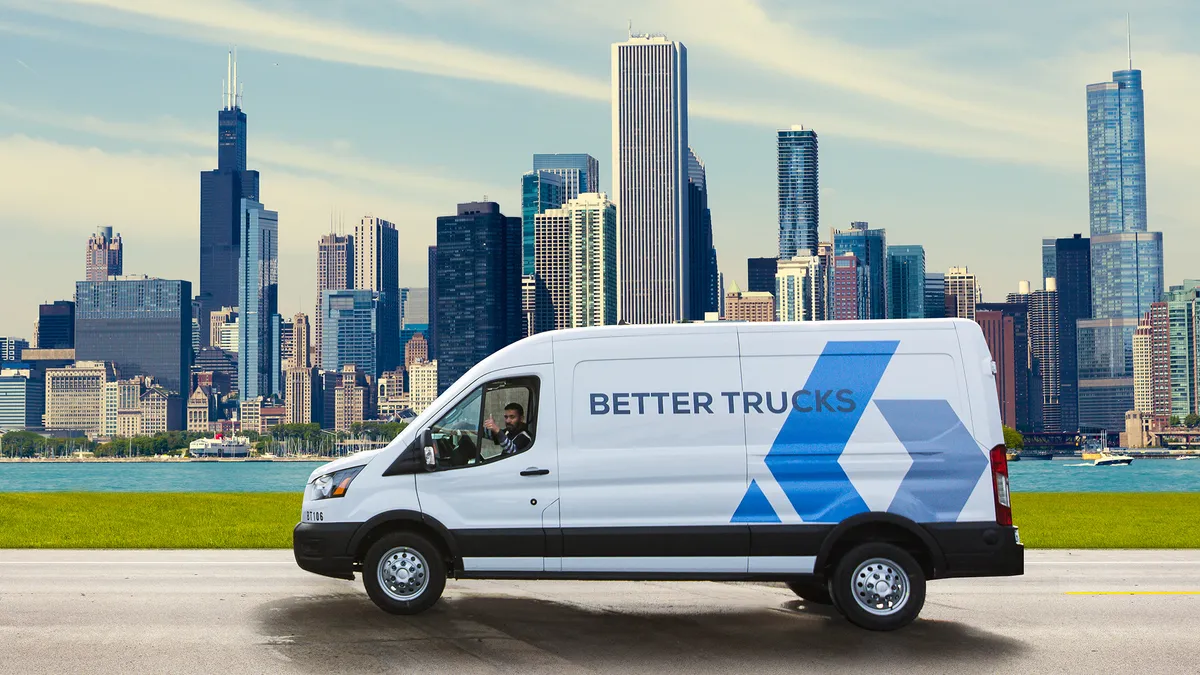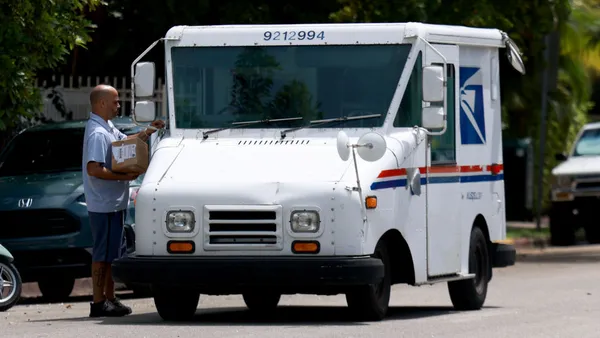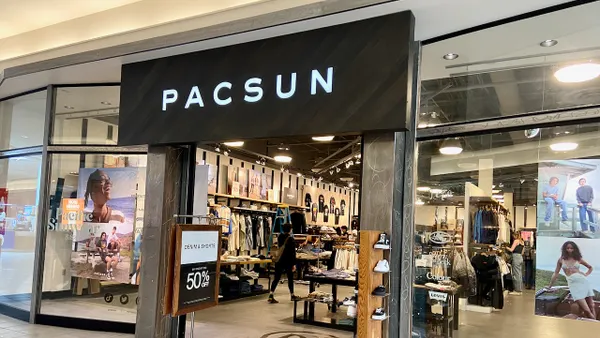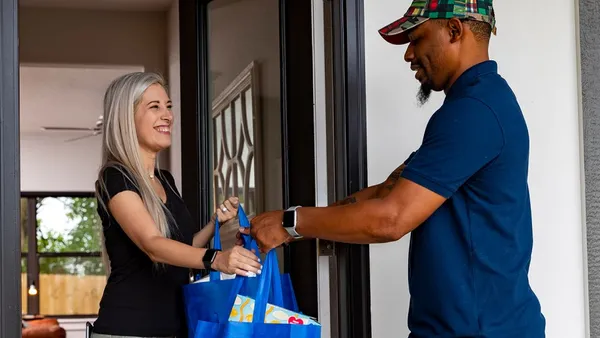Regional delivery companies are growing their presence digitally as much as they are physically, a development that could help them compete with giants like FedEx and UPS.
For smaller firms to gain volume and revenue share in a parcel market dominated by national carriers, upping their appearances on shipping platforms will be just as critical as boosting their capacity and service coverage. A string of partnership announcements between carriers and logistics-focused technology companies in recent months suggests the move is a priority for both.
New partnerships giving shippers carrier access via a tech company
| Carrier | Technology provider | Date announced |
|---|---|---|
| GLS | Tusk Logistics | Feb. 2 |
| Hailify | EasyPost | Feb. 3 |
| Better Trucks | Shipium | Feb. 9 |
| Veho | ProShip | March 1 |
For software providers and shipping platforms, a wider array of carrier options draws in more users. For delivery providers, greater platform availability gives them a stronger chance at gaining customers based on capabilities as opposed to name recognition.
"A service allowing shippers to try multiple carriers out is valuable to us, because we're winning on merit," said Better Trucks co-founder and CEO Andy Whiting.
Improved tech, changed marketplace fuel diversification
Years ago, shippers lacked quick and easy ways to onboard new carriers and customize their carrier mix. Nowadays, they can leverage software to more easily split their packages between multiple providers.
Shippers using EasyPost, for example, could have their packages delivered by FedEx, UPS and the U.S. Postal Service. But the company, which provides an application programming interface for shipping, also offers users access to smaller carriers such as Hailify, a last-mile delivery service available in multiple metro areas.
"That customization has been something that has been new the last 10 years," Hailify CEO Nick Bhashyam said. "It has really brought about the advancement and growth in the last mile industry altogether."
However, it's not just technology advancements fueling the concurrent rise of regional carriers and the technology companies they partner with.
For Ben Emmrich, the immense pricing power large carriers like FedEx and UPS wielded in the early stages of the COVID-19 pandemic motivated him to launch Tusk Logistics. He's CEO of the company, which offers a platform connecting shippers with regional delivery networks that became publicly available in February.
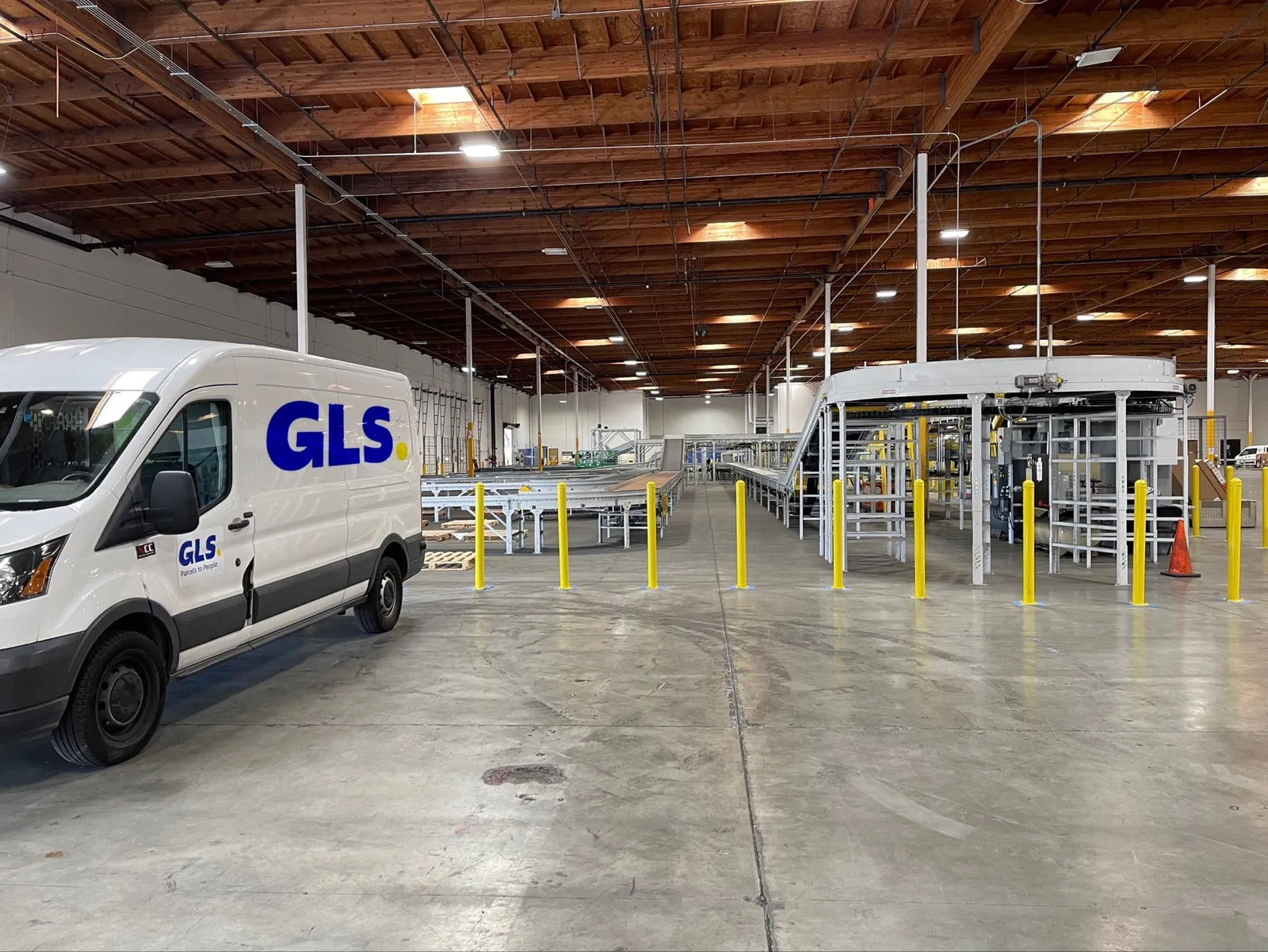
Emmrich said it would have been possible — albeit more challenging — to create the platform five years ago, but that was before shippers encountered a wave of surcharges and capacity constraints from top carriers.
"The pandemic accelerated a lot of these forces that work in opposite interest of the shippers and, as a result, shippers need more alternatives that put value into their pocket," Emmrich said.
Benefits, risks with adding new carriers
Although regional and national delivery providers share space on many shipping platforms, smaller carriers offer unique advantages over their larger competitors that shippers can more easily leverage with the advent of new technologies.
Shipium co-founder and CEO Jason Murray said regionals typically thrive in terms of specialty shipments — such as big and bulky packages — or providing low prices for fast shipments, as long as they're within their specific service territory.
"They're kind of cheaper if your inventory is in alignment with where your customers are," Murray said of regional carriers.
But shippers still have to effectively implement carrier adjustments within their real-world operations to fully realize diversification's advantages, said Better Trucks' Whiting.
For example, a business may need to expand the dock door count at a warehouse to make space for a new carrier. It may also have to adjust operations to account for carriers that only deliver to certain ZIP codes, as opposed to the national reach of FedEx and UPS, and consider how its current facility footprint factors into that.
"No matter how tech-forward your business is, at the end of the day, you are moving physical goods," Whiting said. "There's dock doors, there's space constraints and there are legitimate workflow, under-the-roof changes that may or may not need to happen."
Editor's note: This story was first published in our Logistics Weekly newsletter. Sign up here.



